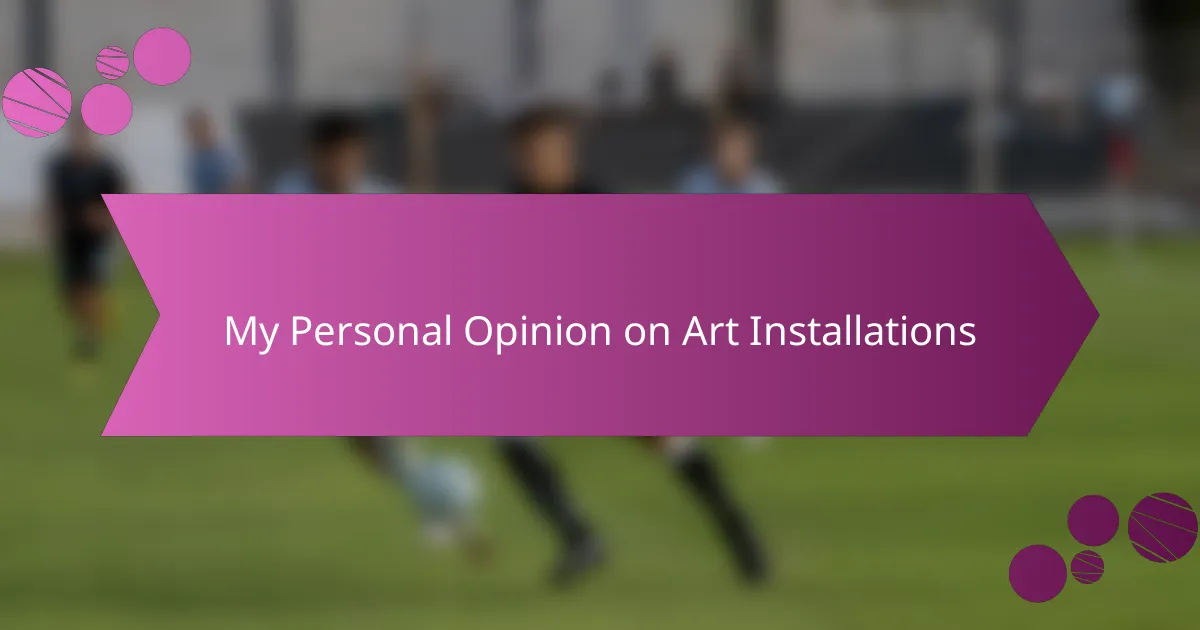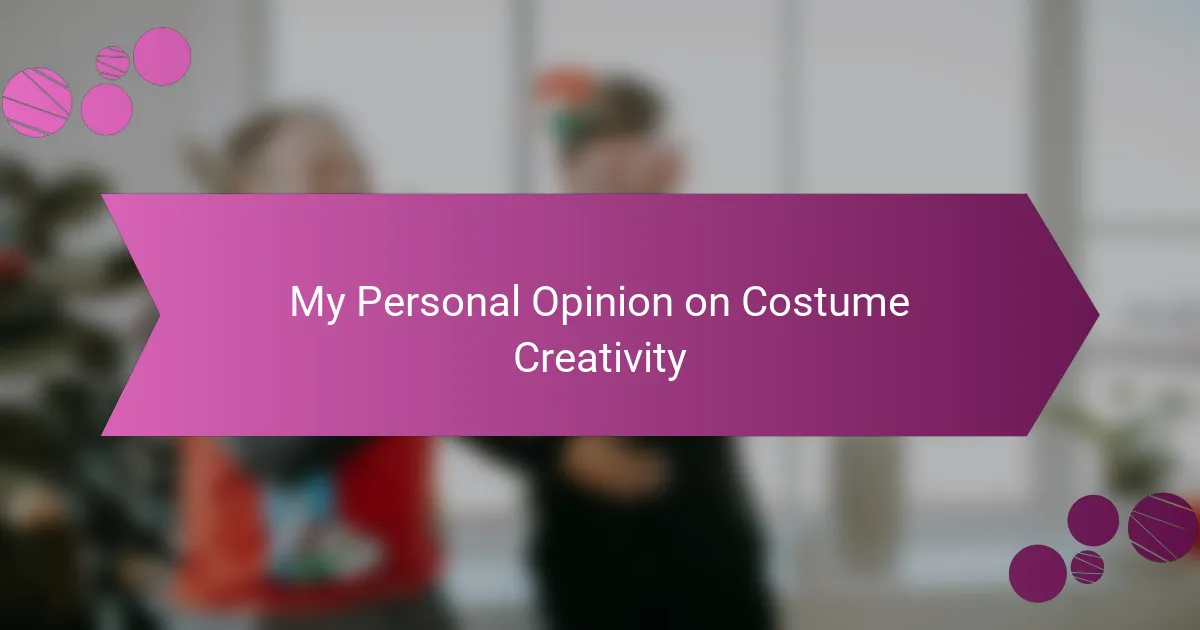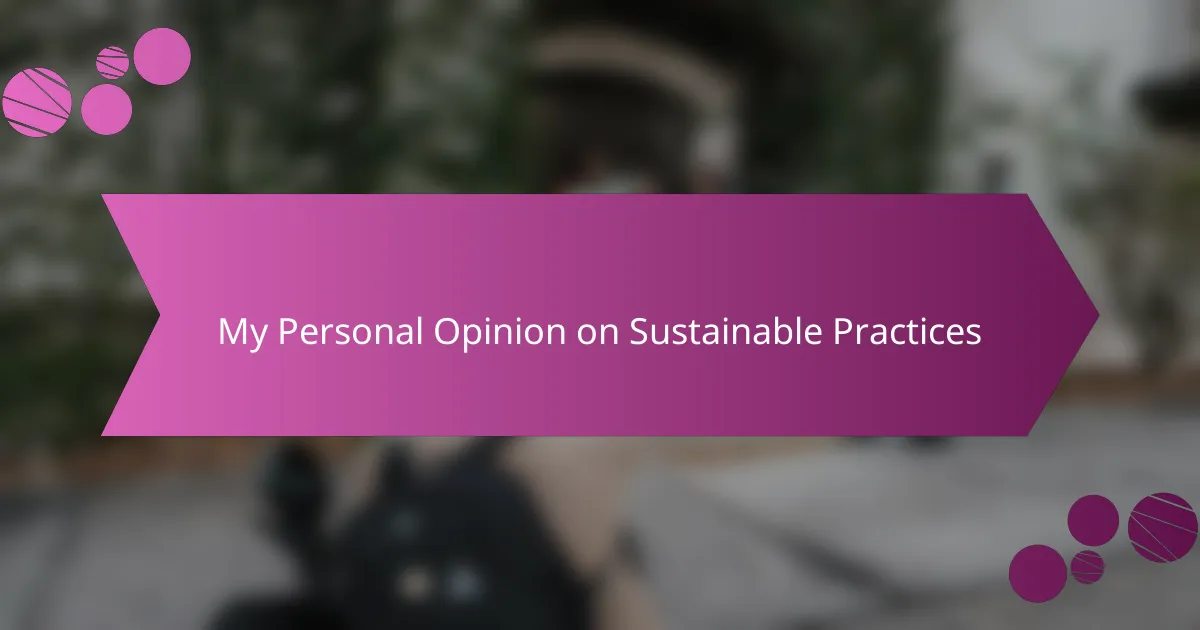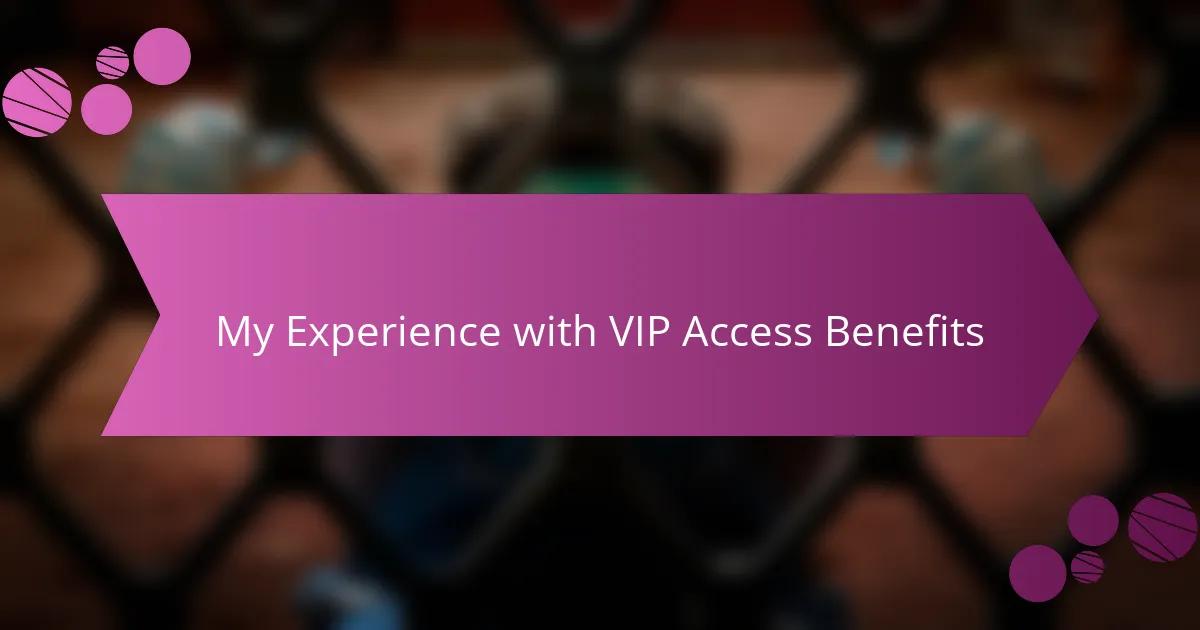Key takeaways
- Thai music festivals celebrate a blend of traditional and contemporary music, offering diverse genres and creating a unique experience for attendees.
- Food plays a significant role, with festival-goers enjoying authentic Thai cuisine that enhances the overall atmosphere.
- Art installations enrich the festival experience by fostering community engagement and encouraging emotional connections among participants.
- Personal interactions at festivals can lead to meaningful connections as attendees bond over shared experiences and artistic expressions.
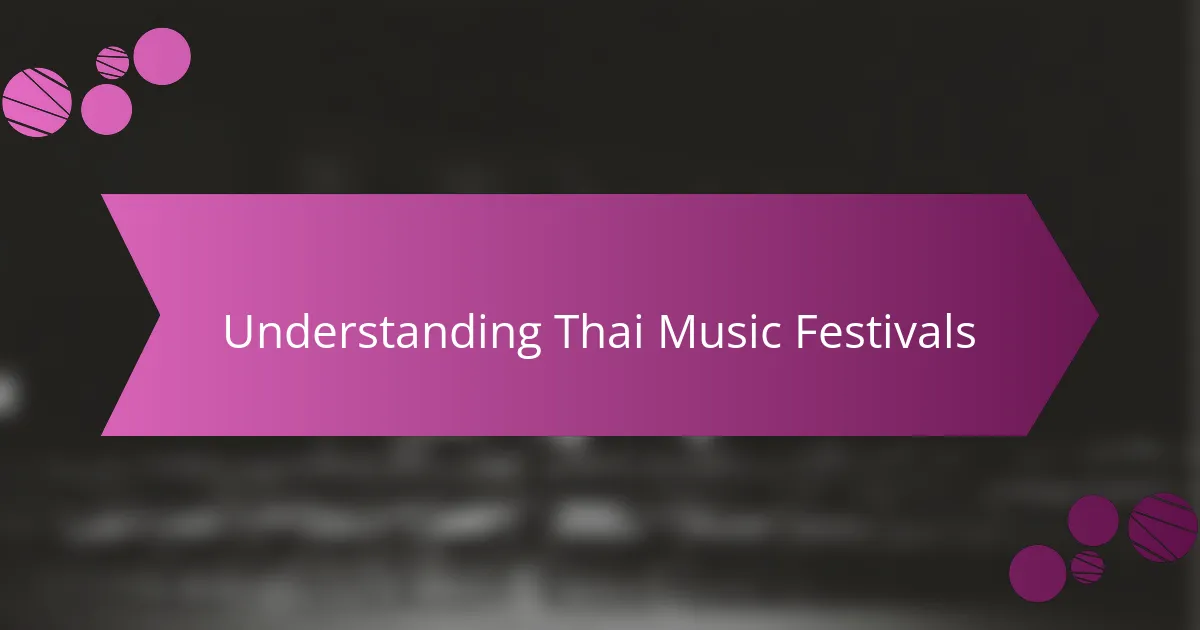
Understanding Thai Music Festivals
Thai music festivals are vibrant celebrations that weave together the rich tapestry of Thailand’s cultural heritage and contemporary musical expressions. I’ve attended several festivals, and each time, I’m struck by the energy and enthusiasm of the crowd. The atmosphere is electric, with laughter, dancing, and a shared love for music that ignites the entire venue.
Here are some key aspects that make Thai music festivals unique:
- Diverse genres: From traditional Thai sounds to modern pop, there’s something for everyone.
- Local cuisine: Festival-goers can savor authentic Thai dishes, enhancing the experience with delicious flavors.
- Artistic performances: Beyond music, these festivals often feature traditional dances and art installations that showcase local talent.
- Community spirit: I’ve felt a profound sense of belonging, as people from various backgrounds come together to celebrate their love for music.
- Stunning locations: Many festivals take place in picturesque settings, providing a breathtaking backdrop for unforgettable moments.
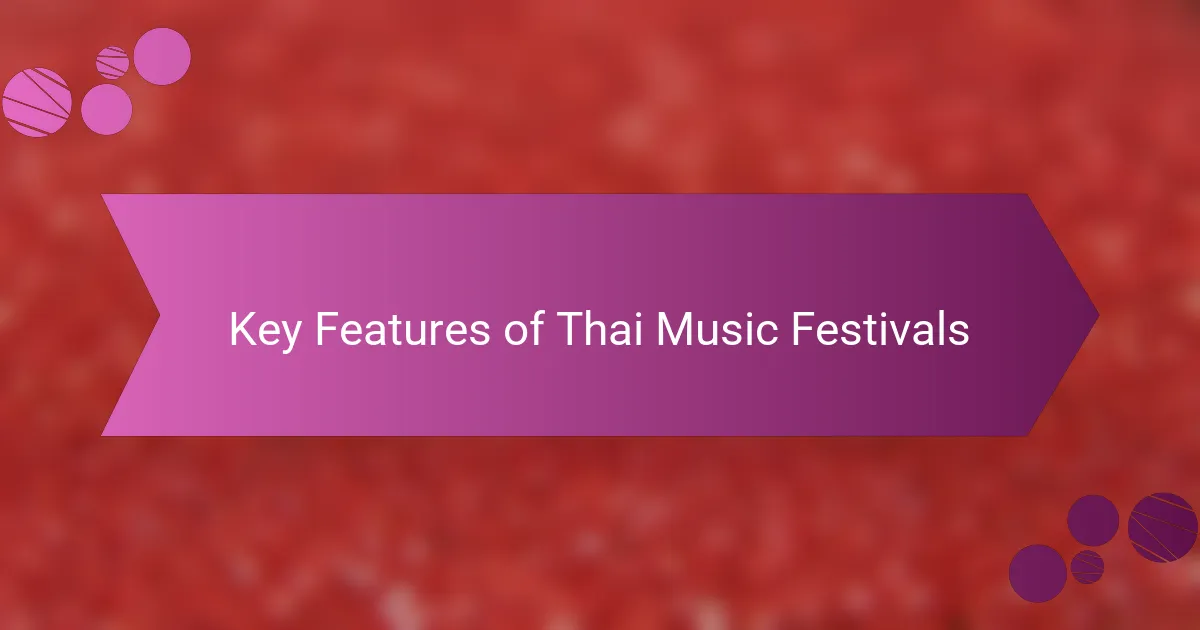
Key Features of Thai Music Festivals
Thai music festivals are vibrant events that celebrate the rich culture and diverse musical heritage of Thailand. One key feature is the blend of traditional Thai music with contemporary genres, creating a unique experience that is both nostalgic and modern. I remember attending a festival where traditional folk music effortlessly transitioned into electrifying pop, making the crowd dance with joy.
Another essential aspect is the incredible food options available, showcasing the rich culinary traditions of Thailand. Food vendors line the festival grounds, offering everything from spicy som tam (papaya salad) to savory satay. I vividly recall savoring some delicious street food while enjoying live performances; it truly enhanced the overall experience.
Finally, the community and camaraderie among festival-goers add a special touch. Strangers become friends as they share moments of joy and excitement during performances. I’ve made lasting connections simply by bonding over our favorite acts.
| Feature | Description |
|---|---|
| Musical Diversity | Combines traditional and contemporary Thai music. |
| Culinary Offerings | A wide range of authentic Thai food options available. |
| Community Spirit | Creates a strong sense of camaraderie among festival-goers. |
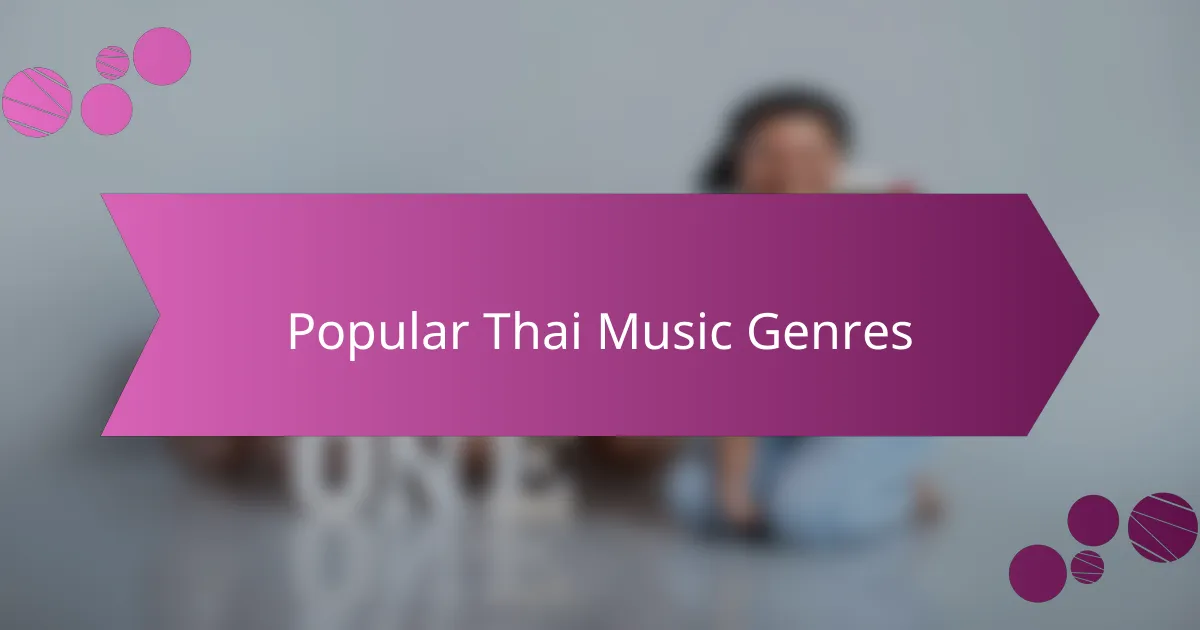
Popular Thai Music Genres
Thai music is incredibly diverse, reflecting the country’s rich cultural heritage. Genres like Luk Thung bring a blend of rural storytelling and modern sounds, while Mor Lam showcases traditional Lao influences with a vibrant twist. I remember attending a local festival where the energy of the live Luk Thung performance was infectious, drawing everyone into a communal dance that felt both joyous and freeing.
Alongside these beloved styles, there’s also a growing appreciation for contemporary genres like Thai pop and rock. At one festival, I was captivated by a young rock band that fused traditional Thai instruments with electric guitars, creating a sound that resonated deeply with both older and younger audiences. It illustrates how Thai music continues to evolve while honoring its roots.
- Luk Thung: Traditional rural music, known for storytelling and lively rhythms.
- Mor Lam: A vibrant genre with roots in Lao culture, characterized by its poetic lyrics and distinct melodies.
- Thai Pop: A modern genre that blends Western pop influences with Thai language and themes.
- Thai Rock: Combining traditional sounds with modern rock influences, appealing to a younger audience.
- Isaan Music: Originating from the northeast, featuring unique instruments and rhythms that reflect local culture.
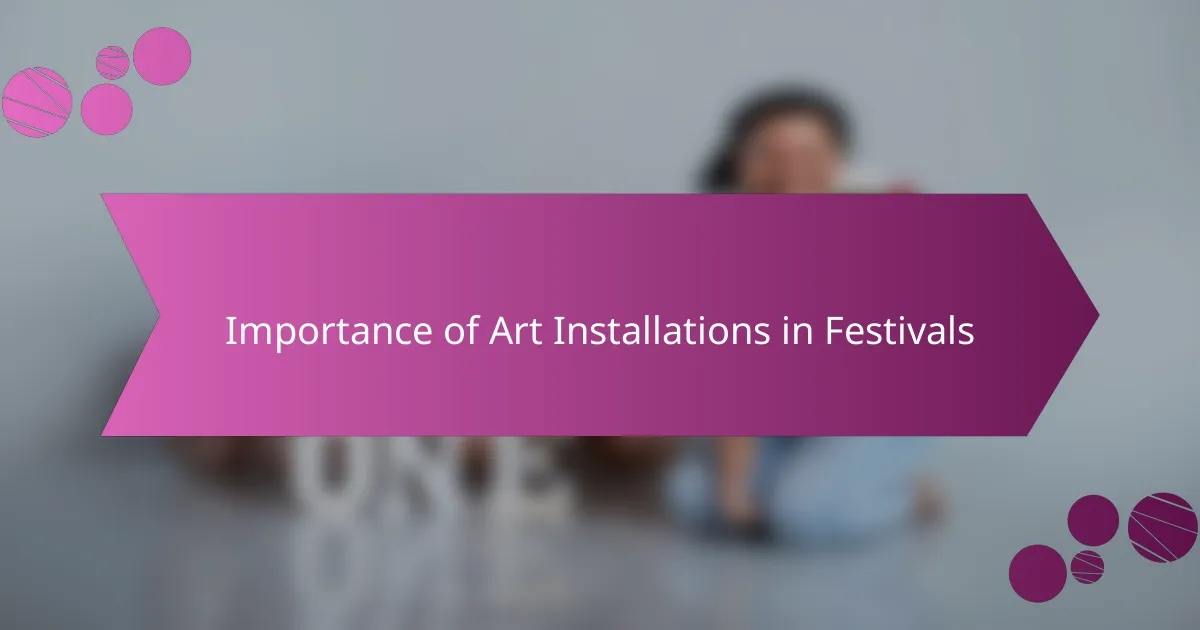
Importance of Art Installations in Festivals
Art installations hold significant importance in festivals, including Thai music festivals, by transforming spaces into immersive experiences. I often find myself drawn to these installations, as they not only enhance the aesthetic appeal but also bring a deeper layer of meaning to the celebration. Imagine walking through a beautifully crafted piece that reflects the essence of Thai culture while enjoying live music; it makes the entire event feel more connected and meaningful.
Moreover, art installations can serve as conversation starters among festival-goers. For instance, I recall a colorful piece at a festival that inspired discussions about its symbolism and the artists behind it. Engaging with others in this way fosters a sense of community, and it’s in those shared moments that friendships often blossom. Isn’t it amazing how art can bring people together, even if they come from different backgrounds?
Ultimately, these installations can also evoke emotions and memories, acting like a bridge between the past and the present. I’ve stood before sculptures that remind me of my childhood and the stories my grandparents told. It’s quite striking how art can capture our experiences and feelings, creating a collective nostalgia. In this way, art installations are not just decorative; they become vital elements of the festival experience, enriching our understanding of culture and connection.
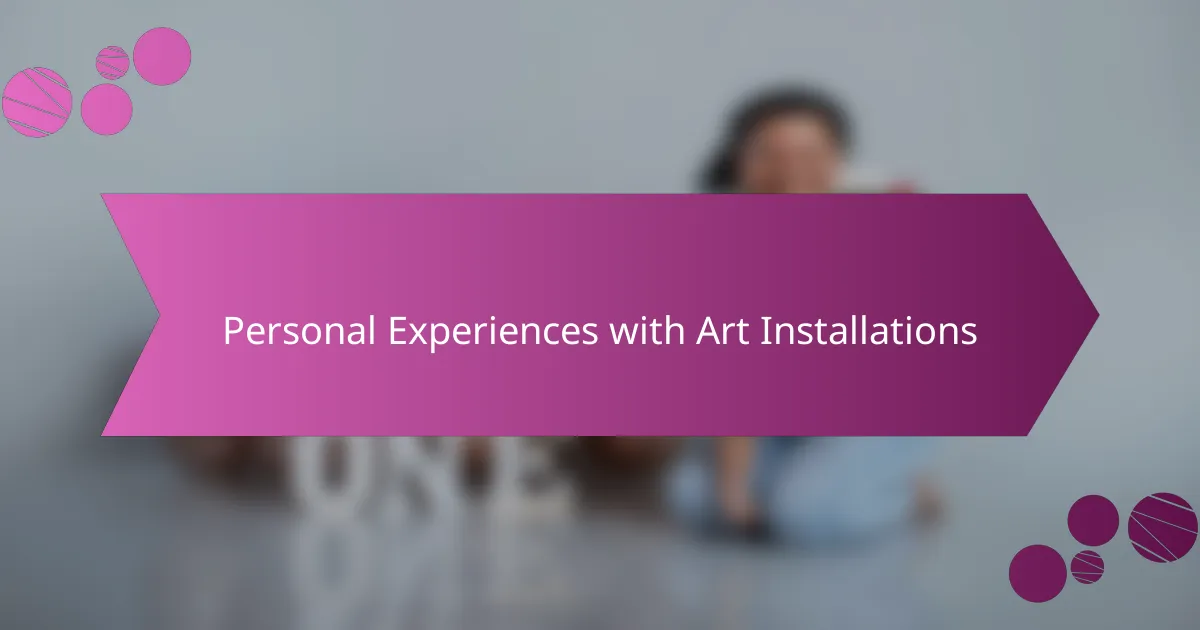
Personal Experiences with Art Installations
I remember the first time I encountered an art installation at a Thai music festival. It was a massive, vibrant mural depicting scenes from traditional Thai folklore. As I stood there, captivated by the colors and details, I felt a wave of nostalgia wash over me. It reminded me of bedtime stories my grandmother used to tell. Isn’t it fascinating how art can invoke such personal memories?
During another festival, I stumbled upon an interactive installation that encouraged participants to express their thoughts on what music meant to them. I hesitated at first, but as I watched others share their emotions, I decided to join in. It was liberating to put my feelings into words, surrounded by like-minded individuals. This experience made me realize that art isn’t just a visual treat; it’s a medium for self-expression and connection.
Art installations often reflect the local culture and community spirit. At one festival, I encountered a stunning sculpture made entirely from recycled materials. It was a beautiful reminder of sustainability intertwined with artistic expression. This piece encouraged conversations about environmental responsibility, making me appreciate art’s ability to spark dialogue. Can art truly change perspectives? I wholeheartedly believe it can, especially in a setting where music and culture intersect.
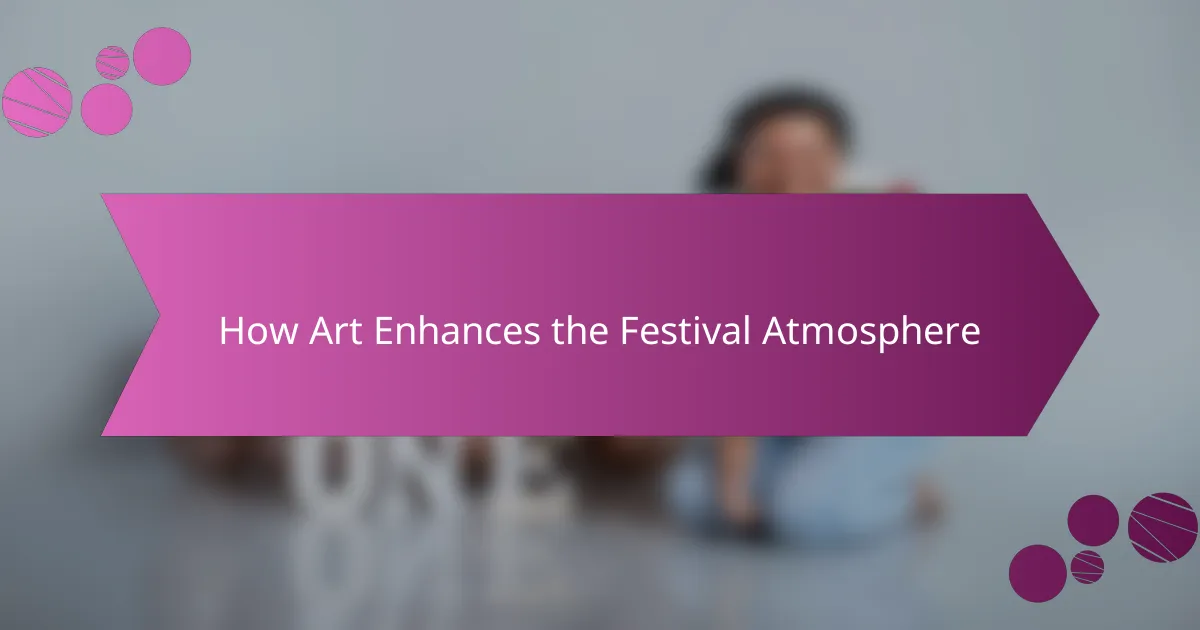
How Art Enhances the Festival Atmosphere
Art installations can truly transform the atmosphere of a festival. I remember attending a music festival in Thailand where vibrant art pieces dotted the landscape, enhancing the overall experience. The combination of sight and sound created a multisensory environment that made the music feel even more alive.
Additionally, art installations often invite interaction, allowing festival-goers to become part of the art itself. I believe this engagement fosters a sense of community, as people gather around these artistic expressions, sharing their thoughts and feelings. It’s not just about enjoying the music; it’s about belonging to something larger than ourselves.
Here’s a simple comparison of how art enhances the festival atmosphere versus a festival without art:
| With Art Installations | Without Art Installations |
|---|---|
| Creates a vibrant, immersive environment | Usually feels flat and one-dimensional |
| Encourages interaction and community | Limited engagement among attendees |
| Enhances emotional connection to the music | Focus remains purely on the sound |
